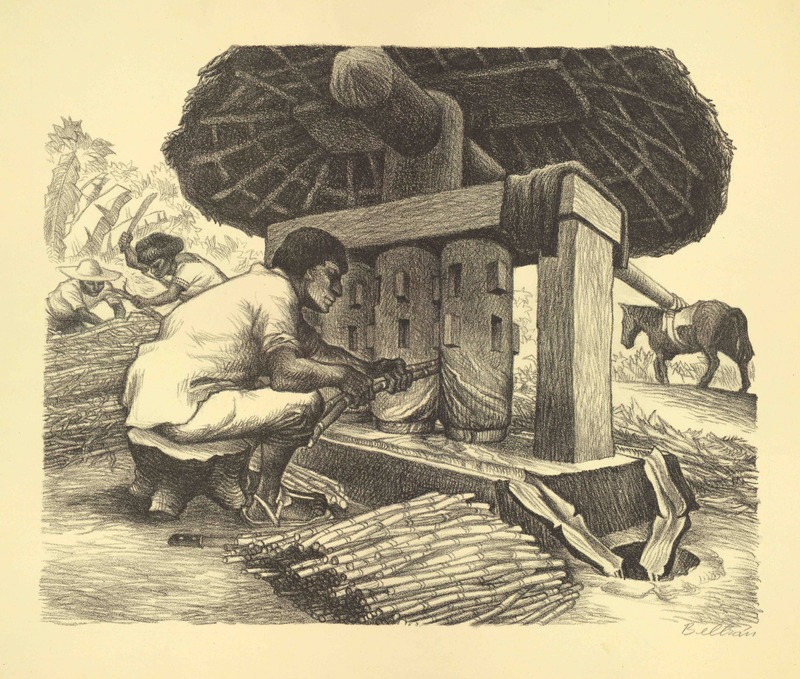"Grinding the Sugar Cane, Puebla" Alberto Beltrán (1947)
Grinding the Sugar Cane, Puebla
Alberto Beltrán
1947
Lithograph
Depicted here as muscular, stoic, and hardworking, an indigenous farmer is devoted to the task of extracting the sweet juice out of a pile of hand-cut sugar cane. His gaze fixed, his arms strong, and his legs firmly planted on the ground, the man inserts two sticks of sugar cane in a wooden grinder moved by a horse. This primitive man-made machine called “trapiche” had been invented during the colonial period and continued being used by farmers for their own livelihood. Throughout his life, Mexican painter, and graphic artist Alberto Beltrán created accurate depictions of rural and indigenous life, portraying peasants, and working-class people as the primary driving force of the nation. Beltrán joined the Taller de Gráfica Popular in 1944, shortly after graduating from the Academy of San Carlos, the National School of Plastic Arts. He contributed prints and illustrations to countless newspapers and publications, using his work to denounce political corruption and support various civic and labor movements. This print was originally included in the portfolio "Mexican People: Twelve Original Signed Lithographs by Artists of the Taller de Gráfica Popular, Mexico City", which highlighted and celebrated the contributions of laborers. Here, the artist depicts farmers working harmoniously on a sugar cane field, paying homage to the resilience of farmers from the northern Sierra of the state of Puebla, Mexico. The central figure shares space with the wooden grinding machine, a compositional choice that highlights the importance of manual labor and traditional production methods at a time when industries began to dominate the national economy.
Patricia Ortega Miranda

